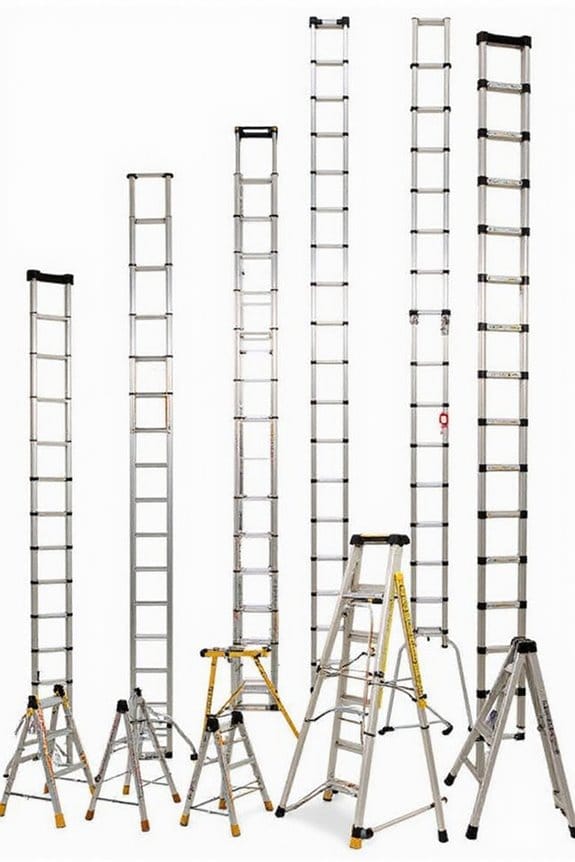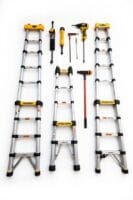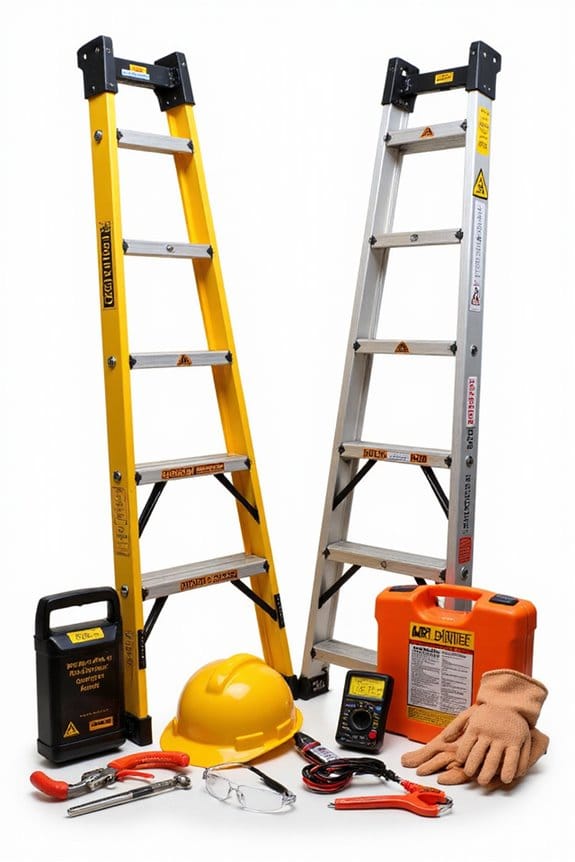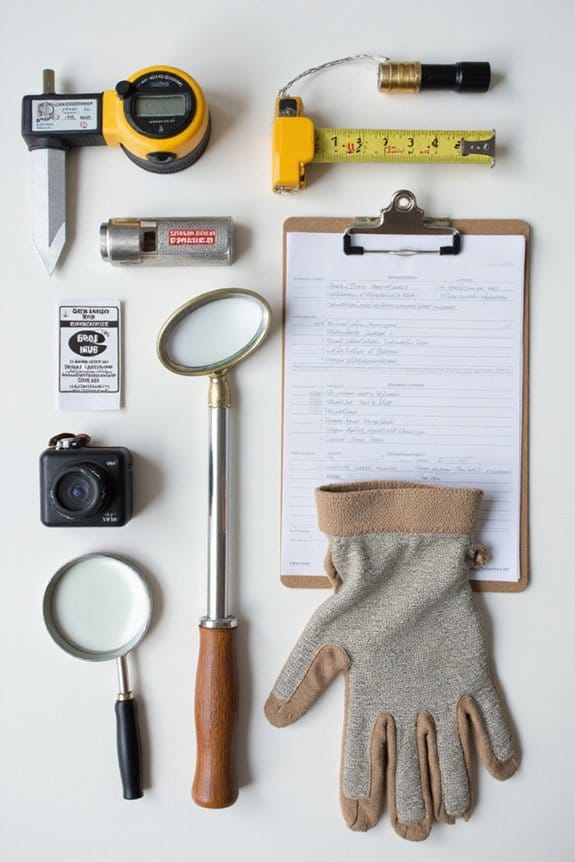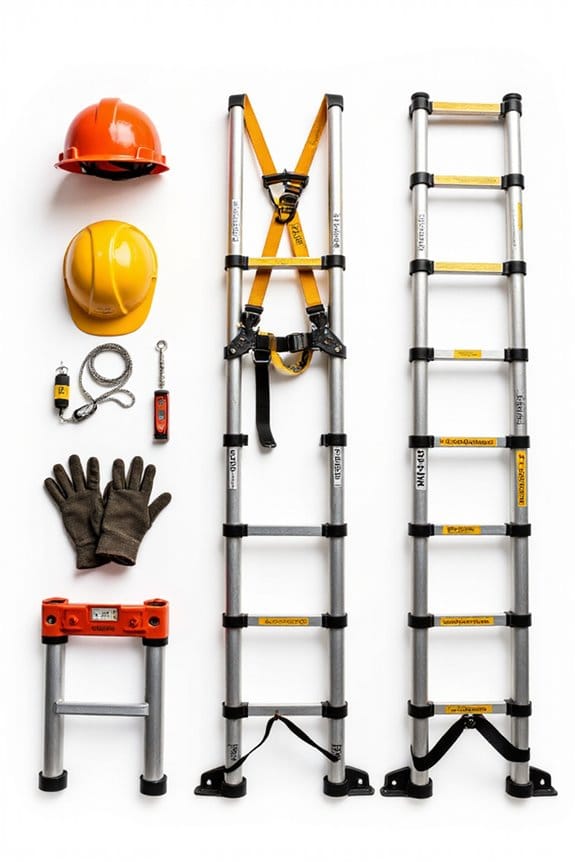Choosing the right ladder height is essential for safe reach. Here’s how I do it: 1) Measure from the ground to your work spot, adding 4 feet for arm reach. 2) Consider the type of ladder you need—step ladders, extension ladders, etc. 3) Always follow ladder height limits; for fixed ladders over 50 feet, you need fall protection. Remember, a stable angle and base placement keep you safe. Stick around, and I’ll share more tips on ladder safety!
Key Takeaways
- Measure the height from the ground to the highest work point and add about 4 feet for optimal reach.
- Choose a ladder type based on your needs, such as step ladders or extension ladders.
- Ensure the ladder height does not exceed limits; fixed ladders over 50 feet require safety features.
- Follow the 4:1 rule for base placement: for every four feet of height, position the base one foot away from the wall.
- Always consider the load capacity of the ladder to ensure it can safely support both the user and any equipment.
Understanding Ladder Height Limits
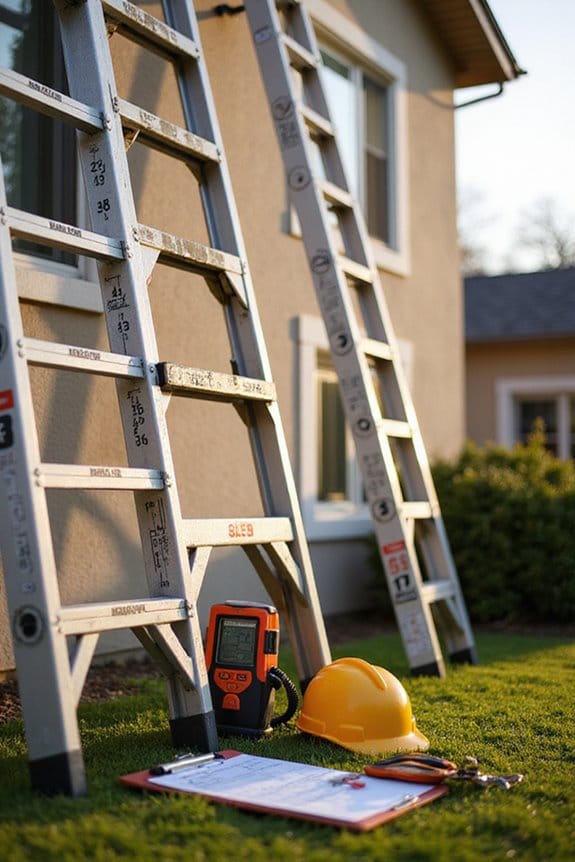
When it comes to choosing the right ladder height, it’s essential to understand the limits set by safety regulations. Trust me; it’s not just about reaching high places! Here are some key points to take into account for ladder safety:
- Fixed Ladders: They can’t exceed 50 feet without a cage or well for fall protection.
- Portable Ladders: Stepladders max out at 20 feet, while Type I ladders range from 3 to 20 feet.
- Spacing: Rungs should be spaced 10 to 14 inches apart for your climbing comfort.
- Clearance: Maintain at least 15 inches from nearby objects while climbing. Additionally, it is important to consider the load capacity of the ladder to ensure it can safely support your weight during use.
Importance of Ladder Angle and Base Placement
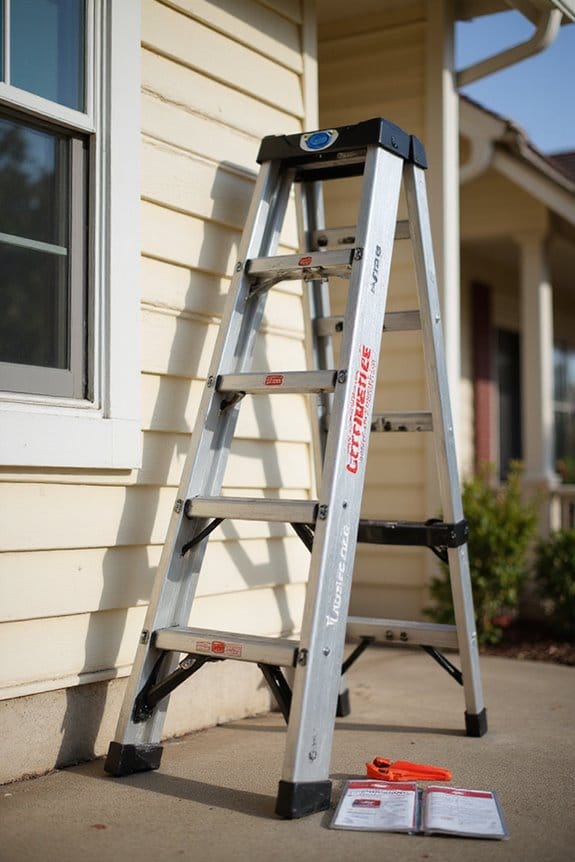
Choosing the right ladder height isn’t just about how far up you need to go; it’s also about how you set it up for safety. Here are two key points to keep in mind:
- Ladder Angle: Aim for a 75-degree angle. This angle guarantees ideal ladder stability and reduces the risk of slipping or tipping over.
- Base Placement: Follow the 4:1 rule. For every four feet of ladder height, the base should be one foot away from the wall. If you’re climbing a 20-foot ladder, place the base about 5 feet from the support. Additionally, always ensure that the ladder has safety features to enhance user confidence during use.
Considerations for Fixed Ladder Installation
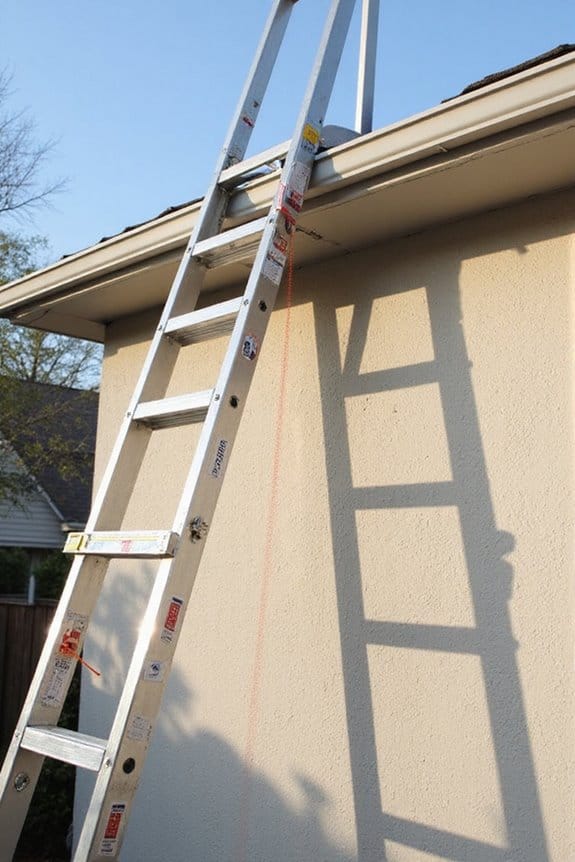
While it might seem straightforward to install a fixed ladder, there are several important considerations to keep in mind to guarantee safety and compliance. Here are my top tips:
- Ladder Materials: Choose durable materials that can withstand environmental exposure. Trust me, a rusty ladder isn’t a safe ladder!
- Structural Support: Verify your installation surface is stable and properly anchored to prevent any wobbling during use.
- Clearances: Maintain a minimum of 7 inches of stand-off clearance from walls or objects to avoid trip hazards.
- Height and Safety: If your ladder exceeds 24 feet, you’ll need to integrate a fall protection system. Additionally, consider the weight capacity of the ladder to ensure it can safely support the user and any equipment.
Fall Protection Requirements Based on Height
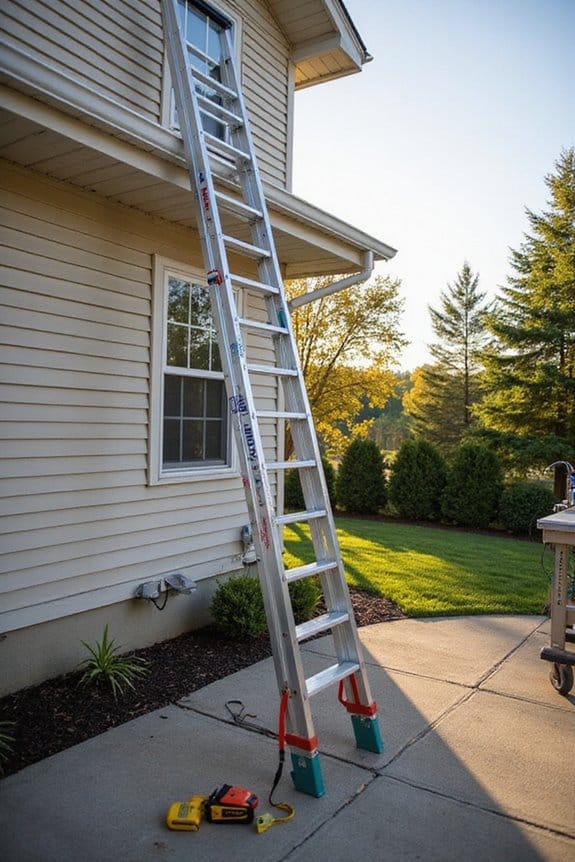
Understanding fall protection requirements based on height is essential for ensuring safety while using fixed ladders. Here’s a quick breakdown of the key height thresholds:
- 24 Feet and Above: Fall protection is mandatory. You’ll need personal fall arrest systems or ladder safety systems installed.
- Under 24 Feet: While not required, I recommend using fall protection as a best practice. Better safe than sorry, right?
- 50 Feet and Higher: OSHA requires landing platforms to reduce fatigue.
Practical Tips for Measuring Work Height
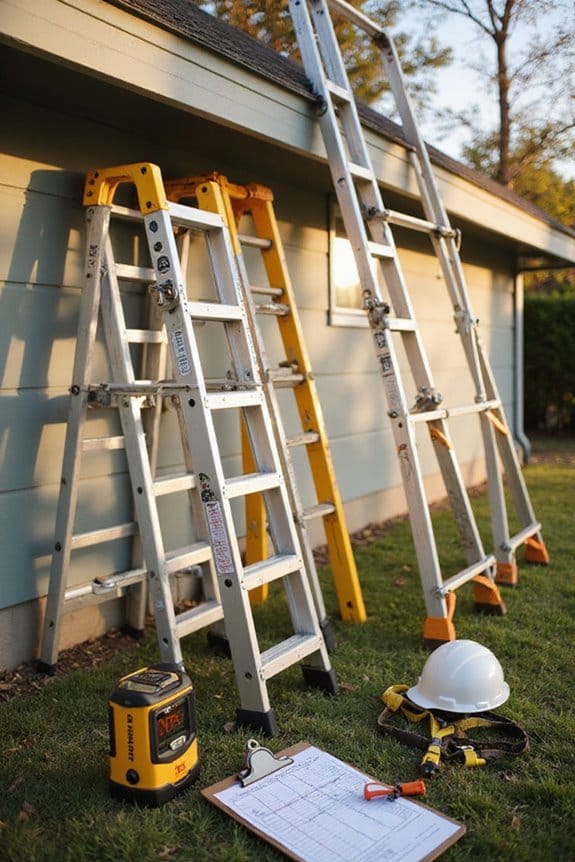
When it comes to measuring work height, getting it right can make all the difference between a safe project and a precarious situation. Here are some practical tips to help you out:
- Measure from the ground to the highest point you’ll be working on. Don’t forget to add about 4 feet for your reach!
- Use a tape measure or laser distance measurer for precise measurements. Trust me, your future self will thank you.
- Check the level of the work surface to confirm accuracy.
- Factor in obstacles or clearance space that could impact your ladder placement. Additionally, understanding load capacity is essential to ensure the ladder can safely support you at the required height.
Selecting the Appropriate Ladder Type for Your Needs
Getting the height measurement right is just the start of your ladder selection journey. Next, you need to choose the right type for your needs. Here’s a quick guide:
- Step Stools: Perfect for low heights—great for grabbing that top shelf.
- Step Ladders: Ideal for indoor or outdoor tasks, offering stability for medium heights.
- Extension Ladders: Need to reach the roof? These are your best bet.
- Folding Ladders: Compact and portable for easy storage.
- Telescoping Ladders: Adjustable, perfect for varying heights.
When selecting, consider ladder materials like fiberglass for electrical work. Additionally, ensure that the ladder you choose has load capacity requirements that exceed your personal weight plus any tools you may carry. And don’t forget about ladder maintenance—keeping it clean and checked guarantees safety. Trust me, a little care goes a long way!
Frequently Asked Questions
What Are the Consequences of Using the Wrong Ladder Height?
Using the wrong ladder height can lead to severe injuries or fatalities. I’ve seen firsthand how ladder safety and adhering to height regulations are essential to prevent falls and guarantee a safer working environment.
Can I Modify a Ladder to Increase Its Height?
Imagine precariously balancing on a shaky ladder; that’s why I never consider ladder modifications for height extension. They compromise safety, risking falls. Instead, I opt for properly designed ladders, ensuring my work at heights is secure.
How Do I Maintain My Ladder for Safety?
To maintain my ladder for safety, I always prioritize regular ladder inspection. I follow essential safety tips, checking for damage, cleaning surfaces, and ensuring secure storage, so I can confidently use my ladder without worry.
Are There Specific Ladder Types for Different Trades?
I’ve noticed that specific ladder types cater to different trade requirements. For instance, electricians prefer fiberglass, while painters often choose lightweight aluminum. Each type enhances safety and efficiency tailored to their unique tasks.
What Should I Do if My Ladder Feels Unstable?
If my ladder feels unstable, I always check its placement, guarantee I follow ladder safety guidelines, and remember stability tips like securing it on level ground. Safety first, so I never take unnecessary risks while climbing!

